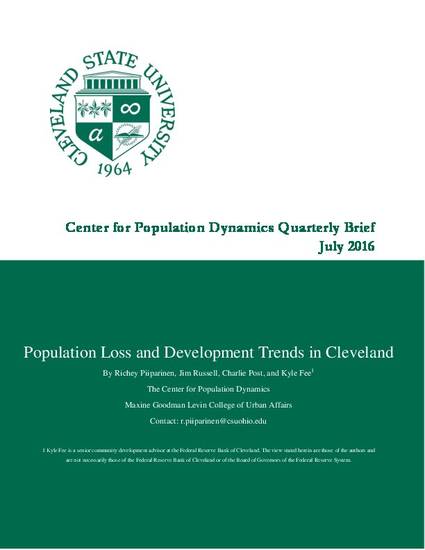
When a place loses population, it’s assumed that’s because people leave. But it’s not that simple. What’s lost in translation is today’s households have fewer people living in them than they did years prior. For instance, 40% of mothers aged 40 to 44 had four or more children in 1976. Today, it’s 14%. Overall, the average American household contracted from 3.14 people in 1970 to 2.54 today. This can explain the apparent paradox of population loss in “shrinking” communities while the number of occupied households grows.
Such was the case in Cuyahoga County. There were 1.72 million residents in the county in 1970. By 2010 the population fell by 440,713, to just over 1.28 million. How much of that loss was due to change in family composition? If the average household size remained at 1970 levels (3.10 people per house), the population of Cuyahoga County would be 1,692,323 in 2010 given its current household totals—412,201 more than the actual number. Taken together, 93.5% of Cuyahoga County’s population loss since 1970 can be explained by change in household composition, not necessarily entire households leaving.
Does this mean outmigration is not a factor locally? No. This is particularly so for the City of Cleveland. Cleveland’s population approached its peak in 1950 with 914,808 residents. In 2010 the population was 396,830—a decline of 517,978 . While the average household size dropped considerably from 1950 (3.44) to 2010 (2.37), the change in household composition accounted for only 34.6% of the city’s population losses since 1950. The remainder was likely due to the decline in the actual number of households, which dropped by nearly 100,000. That is, people left, and not many people arrived, and this was manifested in the erosion of occupied residencies and net outmigration.
Available at: http://works.bepress.com/richey-piiparinen/1/
